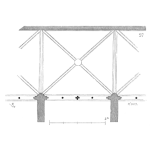
by Phil Swanton
When planning and scheduling, we need to have estimated hours to be able to schedule efficiently. Without estimated hours it makes it close to impossible to know your resource consumption. To take your scheduling efforts to the next level you need to understand the difference between Duration of job vs. labor hours required to perform the tasks.
Labor hours are the time it takes to do the actual work. From when you first start your repair or inspection task. It is the time when value added work is accomplished. It is the time it takes you to replace that failed component. It is the time to check the ultrasound signature of a bearing and add the correct amount of lubrication to get that bearing back into spec. Estimated labor hours support both planning and scheduling of work. But does this truly make you efficient in the scheduling phase. If a scheduler only looks at planned labor, they are possibly missing out on getting more work accomplished. They miss out on the chance to have less overall impact on operations via fewer outages over time. To truly schedule work to be the most efficient and effective we need to also consider duration hours.
Duration hours are the amount of time the technicians need to be on-site at the asset. Let’s say that we must repair an incinerator in a paint shop. To do that work, we need to cool down the incinerator to a safe working temperature. If it takes 2 hours to cool down, and it takes 6 hours to complete repair, and then 2 hours to start back up and bring back to operating temperature. This means your Labor hours are 6 hours, but the total duration of the job is 10 hours.
From the example above, if you do have your duration hours correct it gives the scheduler 4 hours of time to schedule other activities for the technician to accomplish. Maybe a small fixture needs repaired, Programs on a PLC need backed up, CBT training needs to be completed. By understanding the difference between duration hours and required labor hours, you can take the efficiency of your scheduling to the next level.
So, think of it this way. If your duration hours exceed the actual labor hours, you have the opportunity to search your backlog of work and start picking off that low hanging fruit. This will eventually have less overall impact on operations via fewer outages over time, as we become more effective at scheduling value-added work. We need to become more efficient in our scheduling and stop looking at overall work order compliance as “we got the work done within the allotted time”, to “We have completed the most value-added work, within the allotted time available”.

Leave a Reply